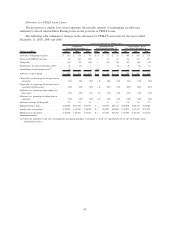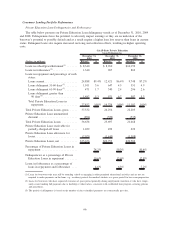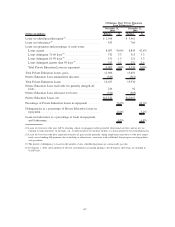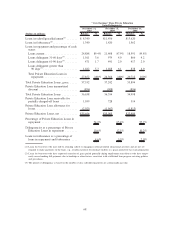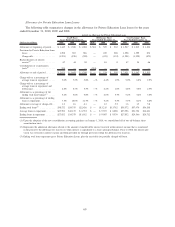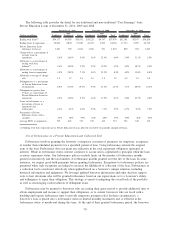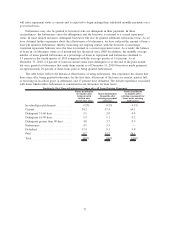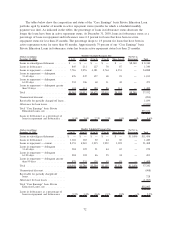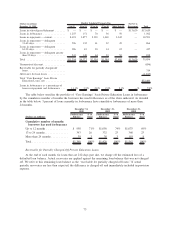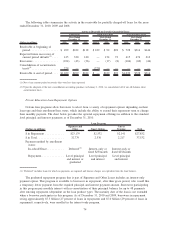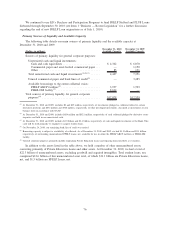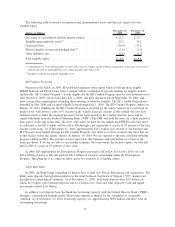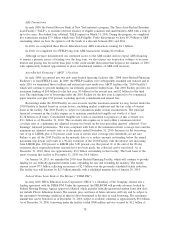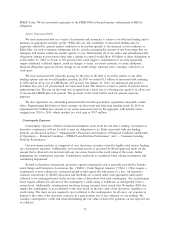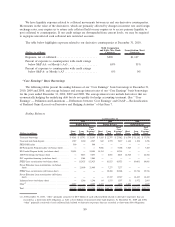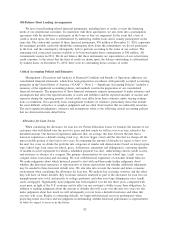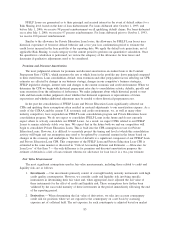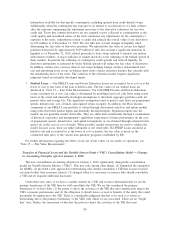Sallie Mae 2010 Annual Report Download - page 76
Download and view the complete annual report
Please find page 76 of the 2010 Sallie Mae annual report below. You can navigate through the pages in the report by either clicking on the pages listed below, or by using the keyword search tool below to find specific information within the annual report.Liquidity and Capital Resources
Funding and Liquidity Risk Management
The following “Liquidity and Capital Resources” discussion concentrates on our FFELP Loans and
Consumer Lending segments. Our Business Services and Other segments need little capital.
We define liquidity risk as the potential inability to meet our contractual and contingent financial
obligations, on- or off-balance sheet, as they come due, as well as the potential inability to originate Private
Education Loans. Our primary liquidity objective is to ensure our ongoing ability to meet our funding needs
for our businesses throughout market cycles, including during periods of financial stress. Our two primary
liquidity needs are funding the originations of Private Education Loans and retiring unsecured debt when it
matures. To achieve that objective we analyze and monitor our liquidity needs, maintain excess liquidity and
access diverse funding sources including the issuance of unsecured debt, the issuance of secured debt primarily
through asset backed securitizations and/or financing facilities and through deposits at Sallie Mae Bank (“the
Bank”), our Utah industrial bank subsidiary.
We define liquidity as readily available assets, limited to cash and high-quality liquid unencumbered
securities, that we can use to meet our funding requirements as those obligations arise. Our primary liquidity
risk relates to our ability to fund new originations and raise replacement funding at a reasonable cost as our
unsecured debt matures. In addition, we must continue to obtain funding at reasonable rates to meet our other
business obligations and to continue to grow our business. Key risks associated with our liquidity relates to
our ability to access the capital markets and access them at reasonable rates. This ability may be affected by
our credit ratings. In addition, credit ratings may be important to customers or counterparties when we
compete in certain markets and when we seek to engage in certain transactions, including over-the-counter
derivatives.
Credit ratings and outlooks are opinions subject to ongoing review by the ratings agencies and may
change from time to time based on our financial performance, industry dynamics and other factors. Other
factors that influence our credit ratings include the ratings agencies’ assessment of the general operating
environment, our relative positions in the markets in which we compete, reputation, liquidity position, the level
and volatility of earnings, corporate governance and risk management policies, capital position and capital
management practices. A negative change in our credit rating could have a negative effect on our liquidity
because it would raise the cost and availability of funding and potentially require additional cash collateral or
restrict cash currently held as collateral on existing borrowings or derivative collateral arrangements. It is our
objective to improve our credit ratings so that we can continue to access the capital markets even in difficult
economic and market conditions.
We expect to fund our ongoing liquidity needs, including the origination of new Private Education Loans
and the repayment of $4.4 billion of senior unsecured notes to mature in the next twelve months, primarily
through our current cash and investment position and very predictable operating cash flows provided by
earnings and repayment of principal on unencumbered student loan assets, distributions from our securitization
trusts (including servicing fees which are priority payments within the trusts), as well as drawdowns under the
2010 ABCP Facility, the issuance of term ABS, the collection of additional term bank deposits and the
issuance of unsecured debt.
We primarily fund our student loan originations at the Bank. Currently, new Private Education Loan
originations are initially funded through deposits. We plan to subsequently securitize these loans to term on a
programmatic basis. We currently have $2 billion of cash at the Bank available to fund future originations.
We no longer originate FFELP Loans and therefore no longer have liquidity requirements for new FFELP
Loan originations. In 2009, we began using the ED Conduit Program (see “ED Funding Programs” of this
Item 7 for a discussion of this program) to fund older FFELP Stafford and PLUS Loans. In addition, in 2008
we began funding new FFELP Stafford and PLUS Loan originations for AY 2008-2009 pursuant to ED’s Loan
Purchase Commitment Program (the “Purchase Program”) and Loan Participation Purchase Program (the
“Participation Program”).We discuss these liquidity sources below.
75


